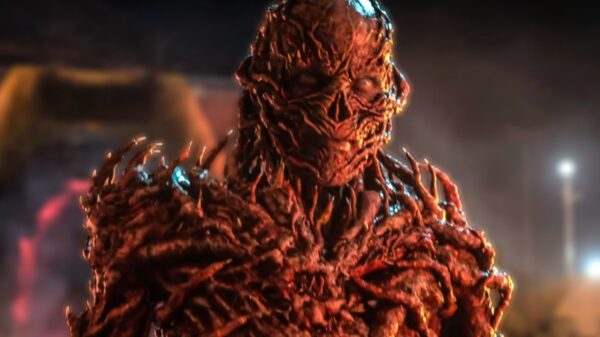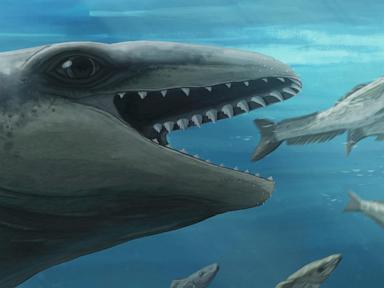A remarkable fossil discovery on an Australian beach has led to the identification of a new species of prehistoric whale, named Janjucetus dullardi. This creature, which lived approximately 25 million years ago, challenges previous notions of early whale evolution. The findings were published in the Zoological Journal of the Linnean Society this week.
The juvenile specimen, found along the fossil-rich coastline of Jan Juc Beach in Victoria, was notably smaller than modern whales, measuring roughly the size of a small bed. Researchers describe Janjucetus dullardi as having bulging eyes akin to tennis balls, a shark-like snout, and sharp teeth suited for a predatory lifestyle. “It was, let’s say, deceptively cute,” remarked Erich Fitzgerald, senior curator of vertebrate paleontology at Museums Victoria Research Institute and one of the authors of the study. He likened it to a quirky combination of a whale, a seal, and a creature from popular culture, but emphasized its uniqueness.
The discovery of this species is significant as it is only the fourth identified within the mammalodontid group, a branch of early whales that existed during the Oligocene Epoch, roughly between 34 and 23 million years ago. These tiny predators, believed to have reached lengths of about 3 meters (10 feet), represent an early evolutionary step towards today’s large baleen whales, such as humpbacks and blues.
Fitzgerald explained that the ancestors of modern whales would have looked vastly different, possibly sporting small, rudimentary legs. “They may have had tiny little nubbins of legs just projecting as stumps from the wall of the body,” he said, highlighting the ongoing mysteries surrounding their anatomical features. The partial skull, which included ear bones and teeth, was discovered in 2019 by Ross Dullard, an amateur fossil hunter, while exploring Jan Juc Beach.
Dullard’s discovery, which began with him spotting a black object protruding from a cliff, unfolded into a significant find for paleontology. After poking at it and dislodging a tooth, he realized he had stumbled upon something extraordinary. “I thought, geez, we’ve got something special here,” Dullard recalled. Following the find, he shared photographs with Museums Victoria, where Fitzgerald recognized the potential significance of the specimen.
The identification of Janjucetus dullardi marks the first mammalodontid confirmed in Australia since 2006 and only the third instance recorded in the country. Fitzgerald noted that fossils of sufficient quality for scientific confirmation are rare. “Cetaceans represent a fairly minuscule population of all life,” he stated, pointing out the challenges of fossil preservation over millions of years.
Such discoveries provide valuable insights into the evolution of whales, including how they adapted to their environments. Researchers are also examining how ancient cetaceans might have responded to warmer oceans, drawing parallels to contemporary marine life facing climate change.
As Dullard celebrates this milestone, he plans to host a fossil-themed gathering, complete with games and treats, to mark the occasion. Reflecting on the journey, he expressed his excitement: “That’s taken my concentration for six years. I’ve had sleepless nights. I’ve dreamt about this whale.” This discovery not only enhances the understanding of whale evolution but also highlights the significance of amateur contributions to scientific research.







































































